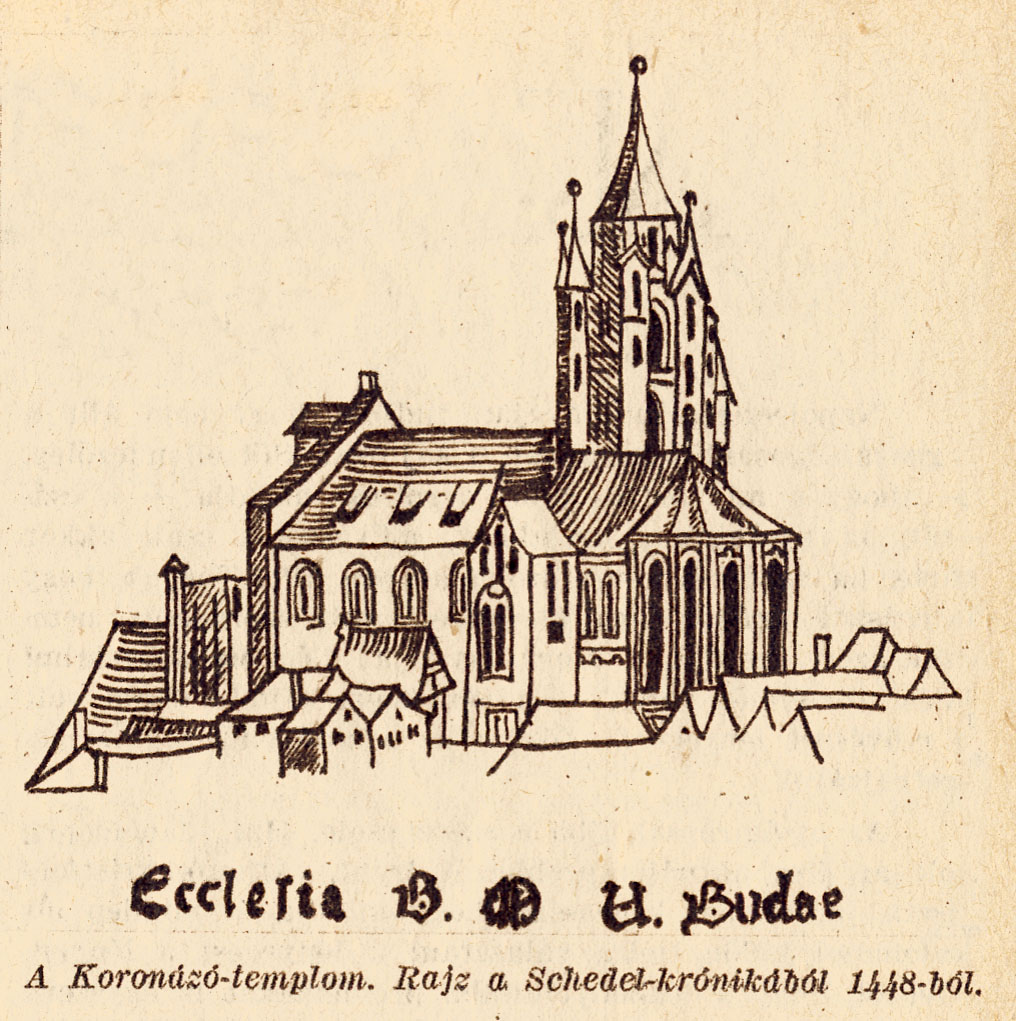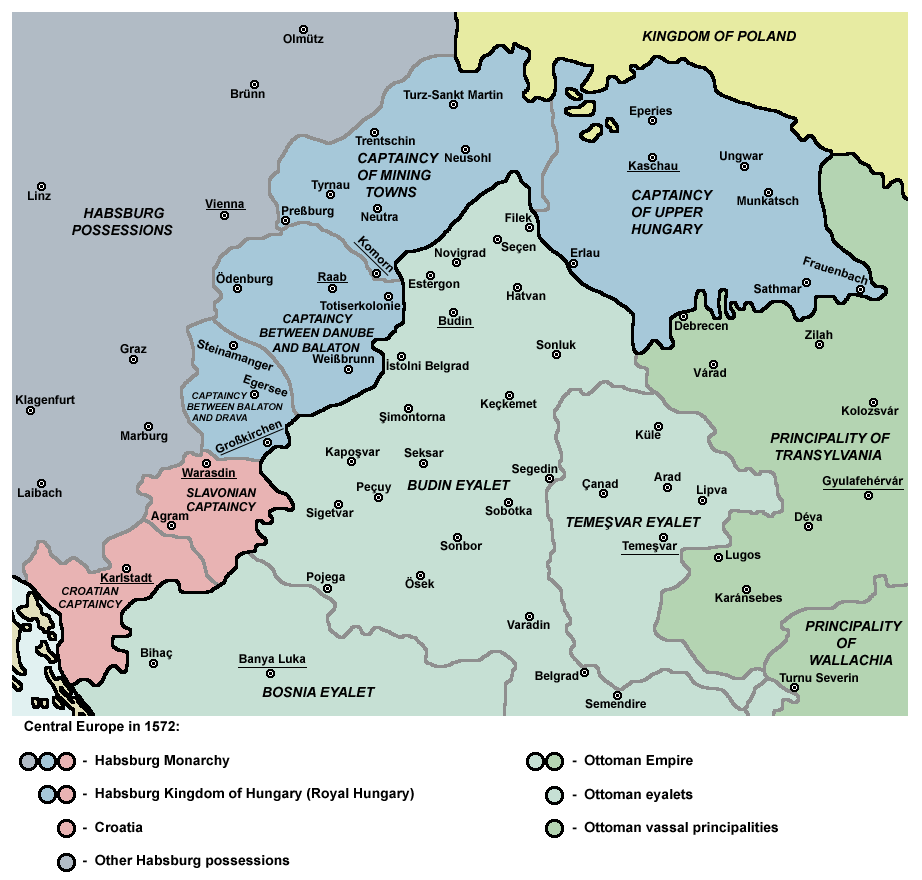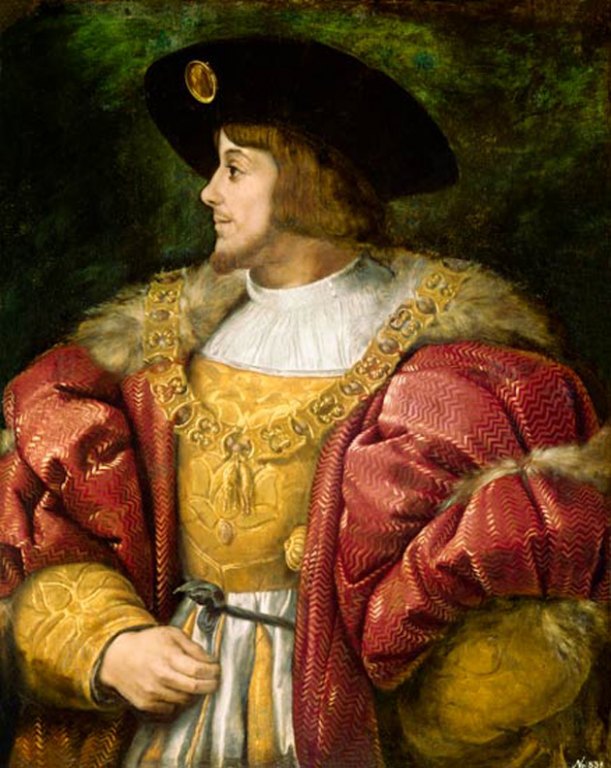|
Halászbástya
The Halászbástya () or Fisherman's Bastion is one of the best known historical monuments in Budapest, located near the Buda Castle, in the Várkerület (Buda Castle District). Since 1987, it has been designated a UNESCO World Heritage Site as part of the Várkerület District (Buda Castle District). It offers a unique panorama of Budapest from its Neo-Romanesque lookout terraces. The Fisherman's Bastion's main façade, parallel to the Danube, is approximately 140 metres long, of which the southern aisle is about 40 metres long, the north is 65 metres long, and the ornate central parapet is 35 metres long. Its seven high-pitched stone towers symbolise the seven chieftains of the Hungarians who founded Hungary in 895. The original walls were built in the 1700s, forming part of the walls of a castle. A consensus among historians is that in the Middle Ages this part of the castle wall was protected by the guild of fishermen (halász), who lived under the walls in the so-called Fi ... [...More Info...] [...Related Items...] OR: [Wikipedia] [Google] [Baidu] |
Várhegy
Castle Hill () is a hill in Budapest's 1st district of Budapest, 1st district. Geographically, it is connected to the Buda Hills and Rose Hill, Budapest, Rose Hill (''Rózsadomb''). The Várnegyed, Castle Quarter (''Várnegyed'') is located on the top of the hill with many monuments around the Buda Castle. The area is one of the most popular attractions in the capital, and can be accessed by bus or in the carriages of a Budapest Castle Hill Funicular, funicular (''Budavári sikló''). Background The hill rises to a height of Height above sea level, above sea level on the right bank of the Danube River, part of the Buda Hills, between Gellért Hill and Rose Hill, Budapest, Rose Hill. it is approximately long and wide. It can be reached by Budapest Castle Hill Funicular, funicular from the direction of the river and by bus from the Inner City (Budapest), city center. The hill is mainly composed of Buda marl. During the Pleistocene era, thick layer of travertine was deposited, ... [...More Info...] [...Related Items...] OR: [Wikipedia] [Google] [Baidu] |
Matthias Church
The Church of the Assumption of the Buda Castle (), more commonly known as the Matthias Church () and more rarely as the Coronation Church of Buda, is a Catholic church in Holy Trinity Square, Budapest, Hungary, in front of the Fisherman's Bastion at the heart of Buda Castle, Buda's Castle District. According to church tradition, it was originally built in Romanesque architecture, Romanesque style in 1015, although few references exist. The current building was constructed in the florid Gothic Revival architecture, late Gothic style in the second half of the 14th century and was extensively restored in the late 19th century. It was the second largest church of medieval Buda and the seventh largest church of the Kingdom of Hungary, medieval Hungarian Kingdom. It is a historic building with an important history. The last two Kings of Hungary were crowned within its walls: Franz Joseph I of Austria, Franz Joseph I of Hungary, and Charles I of Austria, Charles IV of Hungary . The chur ... [...More Info...] [...Related Items...] OR: [Wikipedia] [Google] [Baidu] |
Várnegyed
The Castle Quarter () is the part of Buda in Budapest, the capital city of Hungary, that lies within the defensive walls of the Buda Castle complex, corresponding to the medieval royal city of Buda. Located on ''Várhegy'' (), it is the oldest part of Budapest, having been continuously inhabited since 1247. The center of the neighborhood are the streets between the Royal Palace and Matthias Church. Notable sights ;Viennese Gate The "Bécsi kapu" (''Vienna Gate'') is one of the medieval gates of Buda. Today, it serves as an entrance to the district. ;Buda Castle The first fortress on Várhegy was built in the 13th century. Following the devastation during the Turkish occupation the whole building complex was reconstructed. It now it hosts some notable museums and other monuments, among them the national library. Dísz tér (''En'': ''Dísz Square)'' can be found next to the complex. ;Matthias Church A well-known church in the country. Its construction started around the sam ... [...More Info...] [...Related Items...] OR: [Wikipedia] [Google] [Baidu] |
Romanesque Revival
Romanesque Revival (or Neo-Romanesque) is a style of building employed beginning in the mid-19th century inspired by the 11th- and 12th-century Romanesque architecture. Unlike the historic Romanesque style, Romanesque Revival buildings tended to feature more simplified arches and windows than their historic counterparts. An early variety of Romanesque Revival style known as Rundbogenstil ("Round-arched style") was popular in German lands and in the German diaspora beginning in the 1830s. By far the most prominent and influential American architect working in a free "Romanesque" manner was Henry Hobson Richardson. In the United States, the style derived from examples set by him are termed Richardsonian Romanesque, of which not all are Romanesque Revival. Romanesque Revival is also sometimes referred to as the " Norman style" or " Lombard style", particularly in works published during the 19th century after variations of historic Romanesque that were developed by the Normans i ... [...More Info...] [...Related Items...] OR: [Wikipedia] [Google] [Baidu] |
Frigyes Schulek
Frigyes Schulek (19 November 1841 – 5 September 1919) was a Hungarian architect, Hungarian Electronic Library, retrieved 15 May 2012 a professor at Budapest University of Technology and Economics, József Technical University and a member of the Hungarian Academy of Sciences ''(Magyar Tudományos Akadémia)''. Life Education Schulek was born in Pest, Hungary, Pest and began school in Buda. His mother was Auguszta Zsigmondy. His father Ágost Schulek held a position in the Finance Ministry of Lajos Kossuth. The Schulek family accompanied Kossuth's government on its flight to Debrecen during the Hungarian Revolution of 1848, then returned to the capital. After the suppression of the struggle for independence, Ágost Schulek was declared ''persona non grata'', and the family returned to Debrecen. Graduating ...[...More Info...] [...Related Items...] OR: [Wikipedia] [Google] [Baidu] |
Ottoman Empire
The Ottoman Empire (), also called the Turkish Empire, was an empire, imperial realm that controlled much of Southeast Europe, West Asia, and North Africa from the 14th to early 20th centuries; it also controlled parts of southeastern Central Europe, between the early 16th and early 18th centuries. The empire emerged from a Anatolian beyliks, ''beylik'', or principality, founded in northwestern Anatolia in by the Turkoman (ethnonym), Turkoman tribal leader Osman I. His successors Ottoman wars in Europe, conquered much of Anatolia and expanded into the Balkans by the mid-14th century, transforming their petty kingdom into a transcontinental empire. The Ottomans ended the Byzantine Empire with the Fall of Constantinople, conquest of Constantinople in 1453 by Mehmed II. With its capital at History of Istanbul#Ottoman Empire, Constantinople (modern-day Istanbul) and control over a significant portion of the Mediterranean Basin, the Ottoman Empire was at the centre of interacti ... [...More Info...] [...Related Items...] OR: [Wikipedia] [Google] [Baidu] |
Ottoman Hungary
Ottoman Hungary () encompassed the parts of the Kingdom of Hungary which were under the rule of the Ottoman Empire from the occupation of Buda in 1541 until the Treaty of Karlowitz in 1699. The territory was incorporated into the empire, under the name ''Macaristan.'' For most of its duration, Ottoman Hungary covered Southern Transdanubia and almost the entire region of the Great Hungarian Plain. Ottoman Hungary was divided for administrative purposes into Eyalets (provinces), which were further divided into Sanjaks. Ownership of much of the land was distributed to Ottoman soldiers and officials with the remaining territory being retained by the Ottoman state. As a border territory, much of Ottoman Hungary was heavily fortified with troop garrisons. Remaining economically under-developed, it became a drain on Ottoman resources. During the centuries long three-way Hungarian–Habsburg–Ottoman wars the Hungarian population was highly decimated. Although there was some immigr ... [...More Info...] [...Related Items...] OR: [Wikipedia] [Google] [Baidu] |
Battle Of Mohács
The Battle of Mohács (; , ) took place on 29 August 1526 near Mohács, in the Kingdom of Hungary. It was fought between the forces of Hungary, led by King Louis II of Hungary, Louis II, and the invading Ottoman Empire, commanded by Suleiman the Magnificent and his grand vizier, Pargalı Ibrahim Pasha. The Ottomans achieved a decisive victory through superior planning, firepower, and a well-executed encirclement that overwhelmed the Hungarian forces. The Hungarian army, encouraged by the nobility to engage prematurely, launched a frontal assault that collapsed under coordinated Ottoman counterattacks. King Louis and much of the Hungarian aristocracy were killed, resulting in the destruction of the royal army and the end of the Jagiellonian dynasty in Hungary and Bohemia. The aftermath saw the partition of Hungary between the Ottoman Empire, the Habsburg monarchy, and the Eastern Hungarian Kingdom. The battle marked the beginning of sustained Ottoman–Habsburg wars and the ... [...More Info...] [...Related Items...] OR: [Wikipedia] [Google] [Baidu] |
Austrians
Austrians (, ) are the citizens and Nationality, nationals of Austria. The English term ''Austrians'' was applied to the population of Archduchy of Austria, Habsburg Austria from the 17th or 18th century. Subsequently, during the 19th century, it referred to the citizens of the Empire of Austria (1804–1867), and from 1867 until 1918 to the citizens of Cisleithania. In the closest sense, the name of Austria, term ''Austria'' originally referred to the historical March of Austria, corresponding roughly to the Vienna Basin in what is today Lower Austria. Historically, Austrians were regarded as Germans and viewed themselves as such. The Austrian lands (including Bohemia) were part of the Holy Roman Empire and the German Confederation until the Austro-Prussian War in 1866 which resulted in Kingdom of Prussia, Prussia expelling the Austrian Empire from the Confederation. Thus, when German Empire, Germany was Unification of Germany, founded as a nation-state in 1871, Austria Ge ... [...More Info...] [...Related Items...] OR: [Wikipedia] [Google] [Baidu] |
Budapest Anno 1900
Budapest is the capital and most populous city of Hungary. It is the tenth-largest city in the European Union by population within city limits and the second-largest city on the river Danube. The estimated population of the city in 2025 is 1,782,240. This includes the city's population and surrounding suburban areas, over a land area of about . Budapest, which is both a city and municipality, forms the centre of the Budapest metropolitan area, which has an area of and a population of 3,019,479. It is a primate city, constituting 33% of the population of Hungary. The history of Budapest began when an early Celtic settlement transformed into the Roman town of Aquincum, the capital of Lower Pannonia. The Hungarians arrived in the territory in the late 9th century, but the area was pillaged by the Mongols in 1241–42. Re-established Buda became one of the centres of Renaissance humanist culture by the 15th century. The Battle of Mohács, in 1526, was followed by nearly 15 ... [...More Info...] [...Related Items...] OR: [Wikipedia] [Google] [Baidu] |
Vienna
Vienna ( ; ; ) is the capital city, capital, List of largest cities in Austria, most populous city, and one of Federal states of Austria, nine federal states of Austria. It is Austria's primate city, with just over two million inhabitants. Its larger metropolitan area has a population of nearly 2.9 million, representing nearly one-third of the country's population. Vienna is the Culture of Austria, cultural, Economy of Austria, economic, and Politics of Austria, political center of the country, the List of cities in the European Union by population within city limits, fifth-largest city by population in the European Union, and the most-populous of the List of cities and towns on the river Danube, cities on the river Danube. The city lies on the eastern edge of the Vienna Woods (''Wienerwald''), the northeasternmost foothills of the Alps, that separate Vienna from the more western parts of Austria, at the transition to the Pannonian Basin. It sits on the Danube, and is ... [...More Info...] [...Related Items...] OR: [Wikipedia] [Google] [Baidu] |
Béla IV Of Hungary
Béla IV (1206 – 3 May 1270) was King of Hungary and King of Croatia, Croatia between 1235 and 1270, and Duke of Styria from 1254 to 1258. As the oldest son of Andrew II of Hungary, King Andrew II, he was crowned upon the initiative of a group of influential noblemen in his father's lifetime in 1214. His father, who strongly opposed Béla's coronation, refused to give him a province to rule until 1220. In this year, Béla was appointed Duke of Slavonia, also with jurisdiction in Croatia and Dalmatia. Around the same time, Béla married Maria Laskarina, Maria, a daughter of Theodore I Laskaris, Emperor of Nicaea. From 1226, he governed Transylvania as Duke of Transylvania, duke. He supported Christian missions among the pagan Cumans who dwelled in the plains to the east of his province. Some Cuman chieftains acknowledged his suzerainty and he adopted the title of King of Cumania in 1233. King Andrew died on 21 September 1235 and Béla succeeded him. He attempted to restore royal ... [...More Info...] [...Related Items...] OR: [Wikipedia] [Google] [Baidu] |









